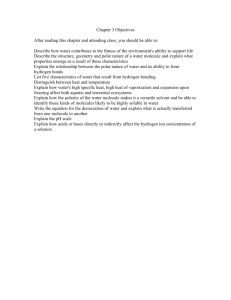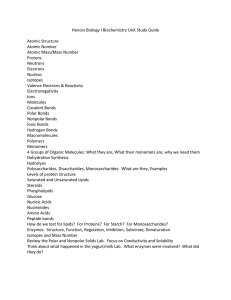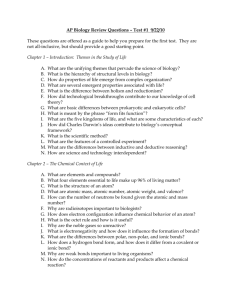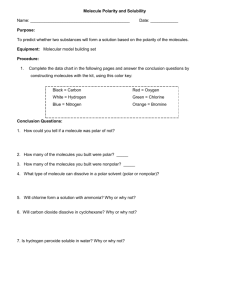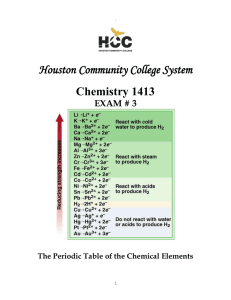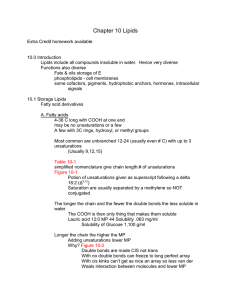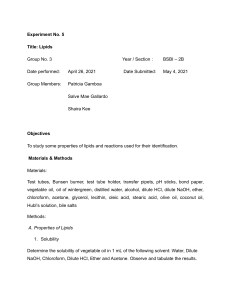Chapter 1-3 Review
advertisement
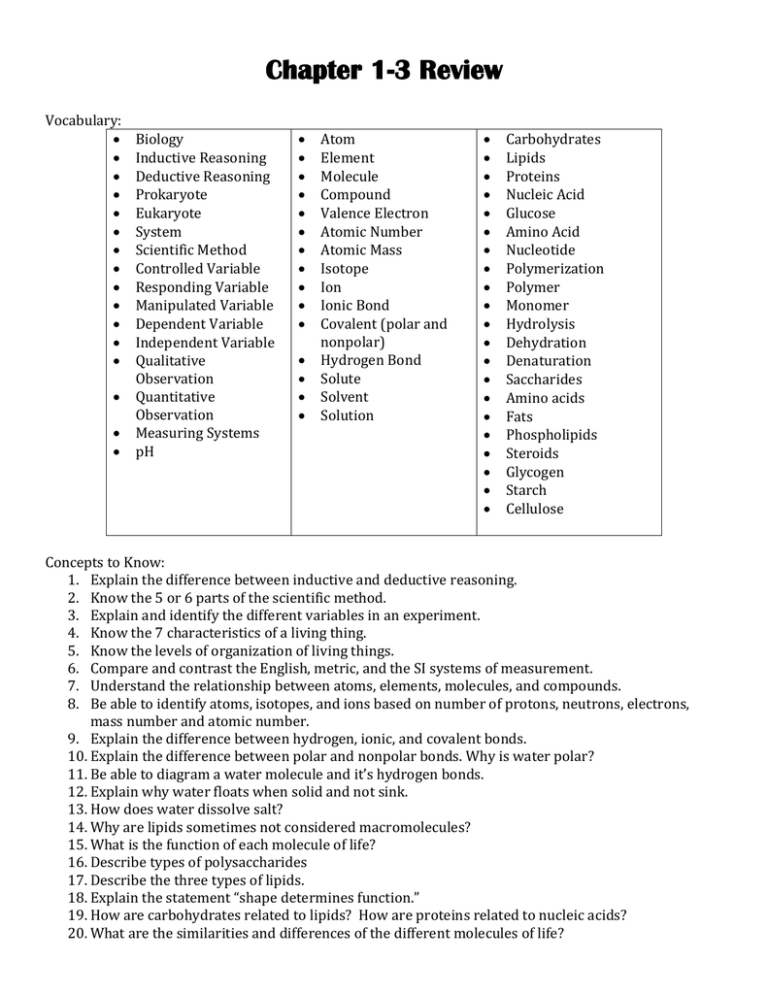
Chapter 1-3 Review Vocabulary: Biology Inductive Reasoning Deductive Reasoning Prokaryote Eukaryote System Scientific Method Controlled Variable Responding Variable Manipulated Variable Dependent Variable Independent Variable Qualitative Observation Quantitative Observation Measuring Systems pH Atom Element Molecule Compound Valence Electron Atomic Number Atomic Mass Isotope Ion Ionic Bond Covalent (polar and nonpolar) Hydrogen Bond Solute Solvent Solution Carbohydrates Lipids Proteins Nucleic Acid Glucose Amino Acid Nucleotide Polymerization Polymer Monomer Hydrolysis Dehydration Denaturation Saccharides Amino acids Fats Phospholipids Steroids Glycogen Starch Cellulose Concepts to Know: 1. Explain the difference between inductive and deductive reasoning. 2. Know the 5 or 6 parts of the scientific method. 3. Explain and identify the different variables in an experiment. 4. Know the 7 characteristics of a living thing. 5. Know the levels of organization of living things. 6. Compare and contrast the English, metric, and the SI systems of measurement. 7. Understand the relationship between atoms, elements, molecules, and compounds. 8. Be able to identify atoms, isotopes, and ions based on number of protons, neutrons, electrons, mass number and atomic number. 9. Explain the difference between hydrogen, ionic, and covalent bonds. 10. Explain the difference between polar and nonpolar bonds. Why is water polar? 11. Be able to diagram a water molecule and it’s hydrogen bonds. 12. Explain why water floats when solid and not sink. 13. How does water dissolve salt? 14. Why are lipids sometimes not considered macromolecules? 15. What is the function of each molecule of life? 16. Describe types of polysaccharides 17. Describe the three types of lipids. 18. Explain the statement “shape determines function.” 19. How are carbohydrates related to lipids? How are proteins related to nucleic acids? 20. What are the similarities and differences of the different molecules of life?
